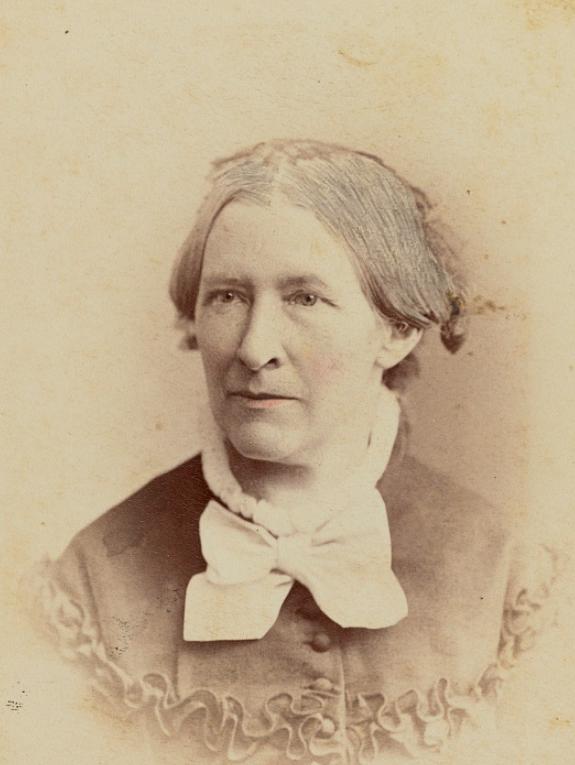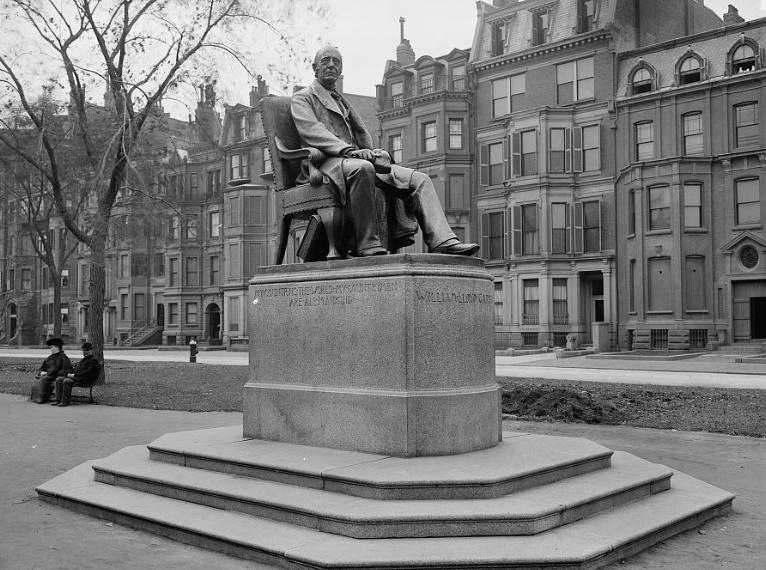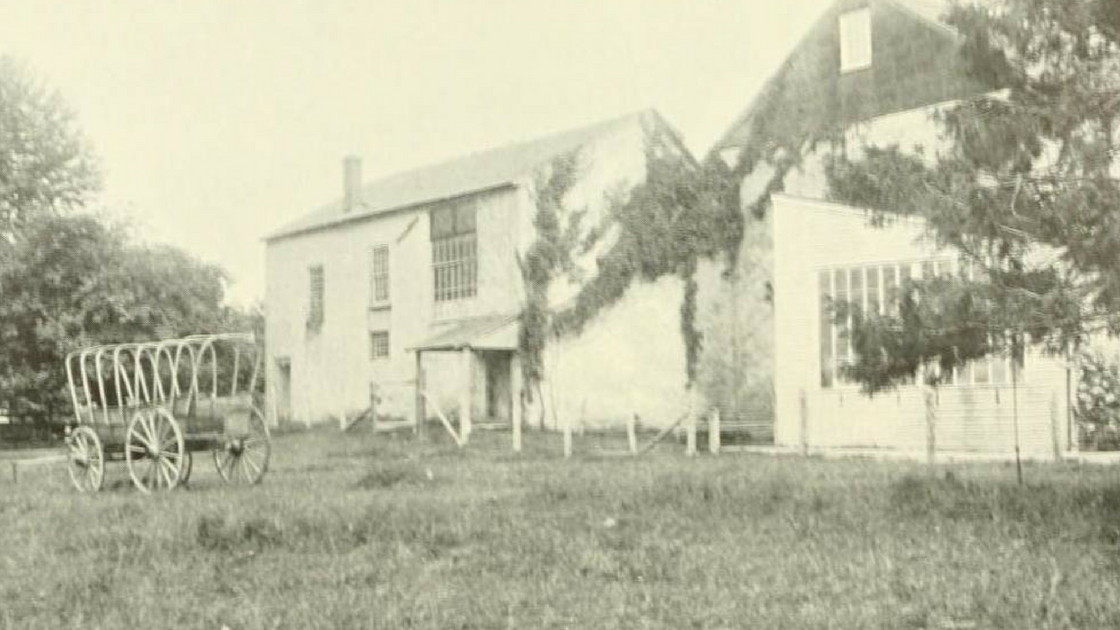A number of individuals spoke of freedom and the evil of slavery at Abolition Hall in Plymouth Meeting. The top photograph shows Abolition Hall, also known as “Anti-Slavery Hall”, as seen in 1906. The Maulsby Barn is the structure to the right in this photo. Both buildings at near the intersection of Butler Pike and Germantown Pike in Whitemarsh Township.
In a news article dated December 3, 1915, The Conshohocken Recorder reported some of the speakers who visited Abolition Hall: “In it were heard during the succeeding years such forceful abolition agitators as [William Lloyd] Garrison, [James Miller] McKim, the Burleighs [Margaret Jones Burleigh and Charles Calistus Burleigh], Lucretia Mott, Abbie Kelley [Abby Kelley Foster], Mary Greer [Mary Grew], and others hardly less powerful in the sweeping and humane movement.

Ms. Margaret Jones Burleigh was a teacher in Philadelphia. She and her husband spoke against slavery at Abolition Hall. Ms. Burleigh served in the leadership of the Pennsylvania Anti-Slavery Society.

Mr. Frederick Douglass spoke throughout the nation against slavery. He was one of a number of abolitionists to speak at Abolition Hall in the Freedom Valley. According to a news timeline presented by CNN on December 13, 2003, Mr. Douglass was the first African-American to “win a vote in a major party’s presidential roll call vote. (He got one vote on the fourth ballot.)” The occasion was the National Convention of the Republican Party in Chicago, Illinois, in 1888.

Ms. Abigail (Abby) Kelley Foster was a leader within the American Anti-Slavery Society. She was among a number of abolitionists who spoke at Abolition Hall. Abby’s House, a shelter for women in Worcester, Massachusetts, is named in her honor. The Abby Kelley Foster Charter Public School, serving students from kindergarten through 12th grade, was also named in her honor in Worcester.

A statue of Mr. William Lloyd Garrison is seen here on Commonwealth Avenue at Dartmouth Street in the City of Boston. Mr. Garrison spoke against slavery at Abolition Hall. He founded The Liberator, a weekly newspaper that fought for the abolition of human bondage, in 1831. Printed on the base of this statue is a quote from Mr. Garrison that was printed in the first issue of his newspaper:
“I am in earnest – I will not equivocate – I will not excuse – I will not retreat a single inch – AND I WILL BE HEARD.”
According to the University of Delaware Library, “slaveholders in the South demanded the end of the incendiary paper and the State of Georgia offered a $5,000.00 reward for Garrison’s capture.”

Ms. Mary Grew spoke of the evil of slavery at Abolition Hall. According to The Woodlands Cemetery, Ms. Grew “served as the corresponding secretary for the Female Anti-Slavery Society for nearly three decades” and served as president of the Pennsylvania Woman Suffrage Association for more than two decades.

The Rev. James Miller McKim was a Presbyterian minister who spoke at Abolition Hall. According to Dickinson College, Mr. McKim was “the corresponding secretary of the [Pennsylvania Anti-Slavery] Society and the editor and manager of its publication, the Pennsylvania Freeman.”
 Ms. Lucretia Coffin Mott was one of the most foremost abolitionists. She joined others in speaking against slavery at Abolition Hall. She believed in equality for all. She was one of the founders of Swarthmore College. A neighborhood in Cheltenham Township – La Mott – is named in her honor.
Ms. Lucretia Coffin Mott was one of the most foremost abolitionists. She joined others in speaking against slavery at Abolition Hall. She believed in equality for all. She was one of the founders of Swarthmore College. A neighborhood in Cheltenham Township – La Mott – is named in her honor.
The top photograph of Abolition Hall is courtesy of Dr. Hiram Corson, 1906.
The photograph of Ms. Margaret Jones Burleigh was created by Broadbent & Phillips and is courtesy of the Library of Congress, 1868.
The photograph of Mr. Frederick Douglass was created by Mr. George Warren and is courtesy of the National Archives and Records Administration, circa 1879.
The print of Ms. Abby Kelley Foster was created by Mr. Alfred Hoffy and is courtesy of the Library of Congress, 1846.
The photograph of the statue of Mr. William Lloyd Garrison is from the Detroit Publishing Co. and is courtesy of the Library of Congress, 1904.
The photograph of Ms. Mary Grew is courtesy of the Collection of the Massachusetts Historical Society, date uncertain.
The photograph of The Rev. James Miller McKim is courtesy of the Collection of the Massachusetts Historical Society, date uncertain.
The painting of Ms. Lucretia Mott was painted by Mr. Joseph Kyle and is courtesy of the Smithsonian National Portrait Gallery, 1842.
Do you have questions about local history? A street name? A building?
Your questions may be used in a future news article.
Contact Richard McDonough at freedomvalleychronicles@gmail.com.
© 2018 Richard McDonough

